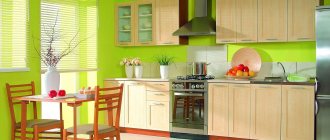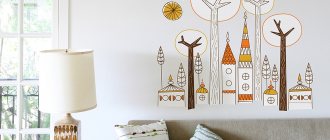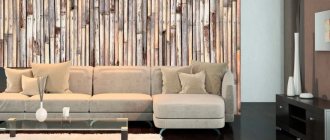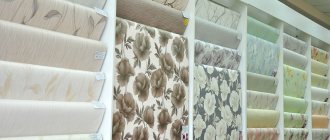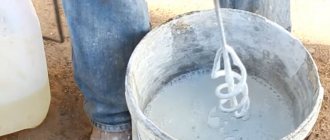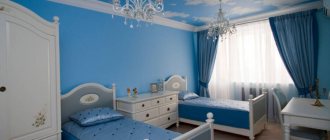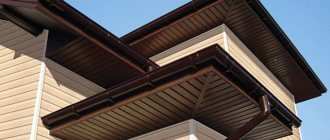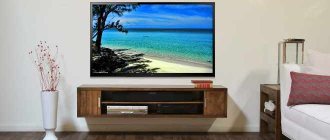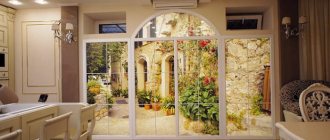Stained glass film is a simple and cheap way to decorate your interior. Real stained glass is fragile, so its manufacture requires a skilled craftsman and a solid budget. The film, in turn, will not only give the window originality and beauty, but will also make it stronger, and will also help in insulating the room.
Stained glass film on the door
Stained glass film bright
Types of film coating
The appearance of the window will depend on what type of film was used during the renovation work.
Stained glass window sticker
Stained glass film blue
Vinyl
Polyvinyl chloride is one of the cheapest plastics that is used everywhere. It is used to make packaging, is used in construction (for example, to create wallpaper with pictures), and to make synthetic fabrics. This film has its advantages:
- Cheapness. Vinyl is an inexpensive and very common material.
- Beauty. There are many varieties of plastic stained glass film. Huge selection of shapes, colors, patterns.
Stained glass film on the staircase window
Stained glass film with flowers on the window
However, it is not entirely of high quality. It has more disadvantages than advantages:
- Fragility. Short service life. After a few years, the window fades, and the film changes shape and swells.
- Difficulty of care. Aggressive chemicals are contraindicated; you will have to use only those recommended for plastic.
- Distortions. Of course, the colored coating changes the view from the window, but vinyl also makes it disproportionate and distorted.
- Difficulties in pasting. Vinyl film is usually already coated with adhesive, but because it is thin and light, it is difficult to smooth it out without leaving bubbles.
This coating is a good temporary solution. But you should always take into account that after a couple of years the film will have to be changed.
Stained glass film with plant pattern
Stained glass film for French windows
Polyester
Polyester is also a plastic used in construction. It is used to make fabrics, packaging and even mattress fillings. It differs from vinyl in better quality. However, it also has pros and cons. The advantages are as follows:
- Durability. Many companies producing polyester film promise a service life of at least 25 years.
- Sustainability. The product is not afraid of changes in temperature, humidity and aggressive chemical care products. It is difficult to tear, and glass coated with film is difficult to break.
- Beauty. Bright and multi-colored, it provides good and clear images without distortion.
Polyester has one main disadvantage - the price. A film made from it costs several times more than a vinyl product.
Stained glass film yellow
Stained glass film for windows in the living room
Sun protection
If the renovation is being undertaken in a house with long daylight hours, where the sun constantly peers through the windows, it would be wise to use a sun protection product. It:
- will muffle the sun's rays, so there will be no need to use curtains, and colored light will dazzle the eyes much less;
- will reduce exposure to ultraviolet radiation (relevant if the room is covered with material sensitive to UV rays or there are pots of flowers in it).
The protective film usually has a dark tint with a metallic tint. This is due to the fact that a layer of metal is applied on top of the plastic. You won’t be able to find a transparent option, but you can choose a weak (inconspicuous) steel tone. They also decorate the room with gold solar control film.
Stained glass film for a plastic window
Stained glass film for kitchen window
Self-adhesive
There are two varieties of this product, which need to be glued differently. This:
- with water-soluble adhesive (attached to wet glass);
- on an anhydrous basis (glue on a dry window).
The first type is more difficult, the second is simpler. However, they are both self-adhesive.
Silver stained glass film
Stained glass film on the living room window
Stained glass film white
Material characteristics, advantages and disadvantages
Whether it is worth using self-adhesive or another film for a glass surface can be understood by understanding the characteristics of the material, its pros and cons. The following positive properties of various films are highlighted:
- Helps prevent room heating in hot weather;
- In cold weather, the opposite effect will occur, heat will not escape, the window will retain heat longer;
- Serves as protection against fading of objects from exposure to ultraviolet radiation;
- Does not attract dirt, there is no need to frequently clean the surface, such as curtains;
- The presence of different colors and patterns, which helps to choose the product to suit the interior of the room.
There are also negative sides:
- Some films are thin and fragile, which can lead to defects when installed on a surface;
- If you buy a low-quality film, you may encounter the problem of difficulty in removing it from the surface, which leads to damage to the window itself;
- You need to try hard to glue the material without bubbles.
How to choose stained glass film
Before you buy stained glass film, you need to consider several important points:
- Availability of a quality certificate. If it is not there, then there is a chance that the plastic is of poor quality, will have an unpleasant odor, will melt in the sun, or will not stick to the window at all. Polyester usually comes with a warranty.
- Adequate film quality. The store should have the opportunity to inspect the product. Any stains, bubbles, dull color or torn edges are a reason to refuse the purchase.
Before you go to the store, you should study reviews about the company so as not to make a mistake with your choice. And, of course, you need to take into account how the film will fit into the interior design.
Stained glass film for kitchen window
Stained glass film for a window in a classic interior
Stained glass film for a bay window
Instructions for self-installation (sticker) of film on windows
- We glue (install) the film only from inside the room. It should not be exposed to rain or snow.
- Take accurate measurements of the glass to be covered and draw up a cutting map (i.e. plan how you will cut the film).
- Using scissors or a utility knife, cut pieces of film based on the cutting card. The size of a piece of film should be 2 cm in width and length larger than the glass on which this piece is glued. You will trim off this excess at the very end of the film sticker.
- Prepare an alkaline solution that you will use to wash the glass before installation. Recipe for a solution for preparing a window for tinting: 50 ml of detergent (for example, fairy or baby shampoo) per 1.5 liters of water.
- Moisten the glass with an alkaline solution and use a rubber spatula to go over the surface of the glass. Drive away water and dirt. Move the scraper along the glass surface from left to right and from top to bottom.
- Re-wet the glass and use a rubber-and-metal squeegee, such as the kind sold for cleaning car windows, to push all the water down from the glass.
- Wet the glass heavily with an alkaline solution and spray water in front of the glass so that all the dust near the glass cannot settle on the wet glass.
- Remove the protective layer from the prepared piece of tinted film. Tip: stick tape on both sides of the corner and pull the tape in different directions.
- Immediately as you remove the protective layer, spray the adhesive layer with an alkaline solution. This will neutralize the glue and allow the film to move across the glass while it is being applied.
- Place the top corners of the film on the glass. Fix them and smooth them. Fold down the bottom corners of the film and allow the film to adhere to the glass.
- Distribute the film over the glass, avoiding folds and creases. And starting from the center, use a rubber spatula to remove the water from under the film. Movements should be short, no more than 20 cm. Start each movement from the place where the film is stuck and move towards the edge of the film.
- Use a utility knife to trim off the excess film around the edges.
- If dust particles or hairs are visible under the film, remove them as quickly as possible. To do this, lift the edge closest to the speck, remove the speck and wet the film. If the speck is barely noticeable, we advise you not to remove it, as the film becomes electrified from smoothing and begins to attract specks from the air. And there is a chance that by removing one speck you will get several new ones.
- This completes the installation of the film on the windows. Do not wash the film within 5 days after its installation. In the future, windows can be washed with detergents without abrasive particles (for example, window cleaning liquid can be washed, but cleaning powder cannot).
Transparent stained glass film
Transparent stained glass film looks elegant and minimalistic.
Stained glass film with a pattern
Brown stained glass film
Transparent stained glass is an original idea. In this case, pattern and accents are provided through texture, sharp edges, and subtle color shading. Such film can also have drawings, it looks interesting. Fits well with the following styles:
- Minimalism. Does not accept bright color accents, but is quite forgiving of pale tones.
- Scandinavian. Geometric patterns are suitable.
- Baroque. An excellent solution is patterned windows; they do not need an additional bright accent.
Transparent decorative window film can also be used as sun protection, but it will have a metallic tint.
Decorative stained glass film with squares
Stained glass film in the bathroom
Decorative stained glass film for a small window
Matte stained glass film
Matte film can be either plain or with a pattern.
Self-adhesive stained glass film
Stained glass film for skin
Matte stained glass film comes in different colors, you can find any colors (depending on the wishes of the owner of the house). It most closely resembles etched glass and has interesting designs or patterns. The main advantage is that it does not make the glass brittle, as happens after sandblasting. On the contrary, a window with film is much stronger.
Such a product will fit well into minimalism and kitsch (frosted colored glass with a pattern in this bright, colorful style can be an excellent finishing accent).
Stained glass film on bedroom windows
Stained glass film with leaves
Stained glass film with flowers
Plain stained glass film
A plain film looks boring only if there are no bright accents in the room.
Stained glass film green
Stained glass film on a glass door
A plain window film can look inconspicuous or be an excellent addition to the overall concept. It all depends on how you fit it in. The colored coating will become a bright accent, and the light translucent shade will not allow the sun's rays to pass through, but will not attract attention. Can replace a mirror. Looks good in minimalism.
Stained glass film with a pattern
Stained glass film with a pattern is a classic option.
Stained glass film with pebbles
Stained glass film with diamonds
Self-adhesive stained glass film with a pattern is a generally accepted option among the possible ones. With its help, you can recreate a real stained glass window without damaging the glass or calling a specialist. The drawing is as follows:
- classic, in which the pattern emphasizes the shape of the window, and multi-colored pieces of glass are beautifully folded into geometric products;
- with plant features (for example, flowers);
- with a heroic picture, where a knight fights a dragon or a beautiful lady is in a tower waiting for a hero (such stained glass windows are a tribute to tradition);
- with a children's drawing (for example, funny animals, the sun or children playing are depicted);
- with abstraction, where colors simply shimmer and intertwine, complementing each other.
Stained glass film for shower
Stained glass film on a bathroom window
Stained glass film for panoramic windows
You can order stained glass stickers for glass, which are made in accordance with a sketch or photograph. Stained glass with a pattern fits into different styles:
- Loft. The film is bright and with graffiti (this is a deviation from the canons, which will look original and appropriate).
- Classic. Yellow and red tones.
- Boho. The stained glass window consists of small pieces of glass, the colors of which form an amazing combination.
- Eco. The main theme should be leaves and vines.
- English classic. This could depict a pack of dogs chasing down a deer.
It must be remembered that in minimalism, Scandinavian and other styles with a minimum of accents, stained glass with a pattern will not be the best solution.
Stained glass film with print
White stained glass window film
Stained glass film on a window in a country house
Features of film application
On which side and why is the protective film applied? Under what conditions and on what glass can it be glued? Answers to these and other questions.
Protective film
for booking windows and other translucent structures is an integral structural element of modern offices, shops, banks and other premises with high responsibility for visitors and staff.
Protective film
helps in preventing the consequences of an explosion or attacks by intruders.
During an attack, a protective film installed on the glass keeps the fragments from flying inside the room
.
Which side?
An important element of applying a protective reinforcing film is its installation on the side of the protected area
– the protective film is installed on the side opposite to the intended attack. With this type of installation, the protective film retains the sharp, life-threatening fragments generated at the point of attack.
